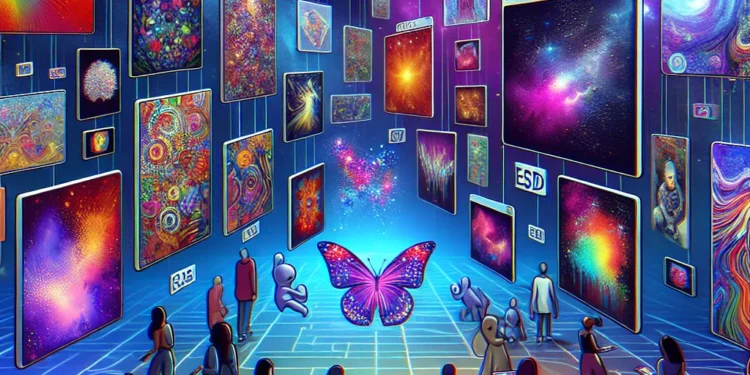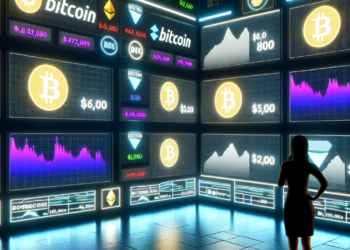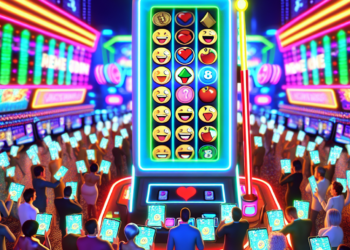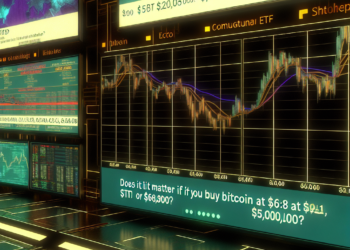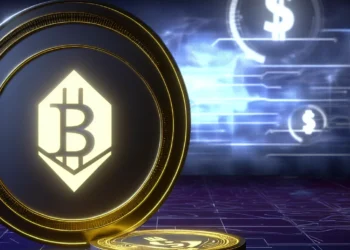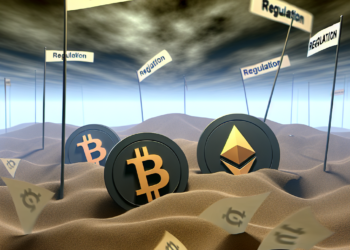Welcome to the exciting world of Non-Fungible Tokens, or NFTs! If you’ve been hearing a lot about NFTs lately and are curious to learn more about this innovative technology, you’ve come to the right place.
So, what exactly are NFTs? Simply put, NFTs are unique digital assets that are stored on a blockchain, making them one-of-a-kind and impossible to duplicate. This means that each NFT has its own distinct value and cannot be interchanged with any other token.
One of the most fascinating aspects of NFTs is their ability to revolutionize the way we perceive and exchange art, music, collectibles, and other forms of digital content. Artists can now tokenize their work, allowing them to reach a wider audience and gain recognition in the digital realm.
But NFTs aren’t just for artists – collectors can also benefit from this technology by acquiring rare and valuable digital assets that can appreciate in value over time. The possibilities are endless, and the NFT market is only just beginning to flourish.
As with any emerging technology, it’s important to educate yourself on the ins and outs of NFTs before diving in. In this guide, we’ll explore the top NFT platforms for both artists and collectors, as well as provide valuable tips on how to get started in the NFT space.
Whether you’re an artist looking to showcase your work to a global audience or a collector seeking to acquire unique digital assets, NFTs offer a whole new world of possibilities. So, buckle up and get ready to explore the exciting universe of Non-Fungible Tokens!
Top NFT Platforms for Artists
So, you’ve decided to dip your toes into the world of NFTs as an artist? That’s fantastic! NFTs have opened up a whole new world of opportunities for creators to showcase and sell their work in a completely digital space. But with so many NFT platforms out there, it can be overwhelming to know where to start. Don’t worry, I’ve got you covered. Here are some of the top NFT platforms that cater specifically to artists:
1. OpenSea
OpenSea is one of the largest and most popular NFT marketplaces out there. It allows artists to mint, buy, and sell NFTs across various blockchains like Ethereum and Polygon. With a user-friendly interface and a wide range of categories, OpenSea is a great platform for artists looking to reach a global audience.
2. Rarible
Rarible is another prominent NFT marketplace that offers a decentralized platform for artists to create and sell their digital art. Artists can mint their own NFTs, set royalties, and even create limited editions of their work. With a strong community of collectors and creators, Rarible is a great platform to showcase your art.
3. Foundation
Foundation is an invite-only NFT marketplace that focuses on fostering creativity and innovation in the digital art space. Artists can apply to join the platform and create limited edition NFTs that are curated by the Foundation team. With a strong emphasis on quality and exclusivity, Foundation is a great platform for artists looking to showcase their unique creations.
4. KnownOrigin
KnownOrigin is a curated NFT platform that features digital artwork from talented artists around the world. With a focus on authenticity and originality, KnownOrigin ensures that each piece of art on the platform is verified and authenticated. Artists can mint their work on KnownOrigin and tap into a community of art enthusiasts and collectors.
5. SuperRare
SuperRare is a premium NFT platform that caters to high-end digital artists looking to showcase their work to a discerning audience. Artists on SuperRare can create limited edition NFTs, interact with collectors, and even participate in curated auctions. With a focus on quality and exclusivity, SuperRare is a great platform for artists looking to elevate their digital art career.
These are just a few of the top NFT platforms that artists can explore to showcase and sell their digital artwork. Each platform offers unique features and benefits, so it’s important to research and find the one that best fits your artistic style and goals. Remember, the NFT space is constantly evolving, so don’t be afraid to experiment and see what works best for you. Good luck on your NFT journey!
Criteria for Choosing an NFT Platform
So, you’ve decided to dip your toes into the world of NFTs – exciting! But with so many NFT platforms out there, how do you choose the right one for you? Here are some key criteria to consider when selecting an NFT platform:
- Marketplace Fees: Different NFT platforms have varying fee structures, so it’s important to consider how much you’ll be charged for listing your artwork or buying/selling NFTs. Some platforms may have lower fees but offer less visibility, while others may have higher fees but reach a larger audience.
- Community and Reach: Look for NFT platforms with an active and engaged community of artists and collectors. A platform with a strong network can help increase exposure for your work and attract potential buyers.
- Security and Authenticity: Ensure that the platform you choose has robust security measures in place to protect your artwork and transactions. Look for platforms that use blockchain technology to verify the authenticity of NFTs and provide transparency in the buying and selling process.
- User-Friendly Interface: A user-friendly platform can make the NFT creation and buying/selling process smoother and more enjoyable. Look for platforms with intuitive interfaces and easy-to-use tools for minting NFTs, setting prices, and managing your collection.
- Creative Control: Consider how much creative control the platform gives you over your artwork. Some platforms may restrict certain types of content, while others may offer more freedom for artists to express themselves.
- Payment Options: Check what payment options the platform supports for buying and selling NFTs. Some platforms may only accept cryptocurrency, while others may offer additional payment methods like credit cards or bank transfers.
- Track Record and Reputation: Do some research on the platform’s track record and reputation in the NFT community. Look for platforms that have a solid reputation for fairness, transparency, and supporting their users.
By considering these criteria, you can make an informed decision on which NFT platform aligns best with your goals and preferences as an artist or collector. Remember, each platform has its own unique features and benefits, so take the time to explore your options and find the platform that’s the perfect fit for you. Good luck!
Top NFT Platforms for Collectors
So you’ve heard about NFTs and you’re eager to start collecting these unique digital assets. But where do you begin? With the growing popularity of NFTs, there are now numerous platforms available for collectors to browse, buy, and sell these one-of-a-kind tokens. Here are some of the top NFT platforms that you should consider exploring:
1. OpenSea
OpenSea is one of the largest and most popular NFT marketplaces, offering a wide range of digital collectibles, art, and other assets. With a user-friendly interface and a vast selection of NFTs to choose from, OpenSea is a great platform for both beginner and experienced collectors.
2. Rarible
Rarible is another popular NFT marketplace that allows users to create, buy, and sell digital assets. What sets Rarible apart is its unique governance token (RARI) that allows holders to participate in platform decisions. If you’re looking to support independent artists and creators, Rarible is a great platform to explore.
3. Foundation
Foundation is a curated NFT marketplace that focuses on showcasing high-quality digital art from emerging and established artists. With a selective approval process, Foundation ensures that only top-tier NFTs are available for sale on its platform. If you’re looking for exclusive and premium digital art, Foundation is the perfect place to start your collection.
4. Nifty Gateway
Nifty Gateway is a user-friendly NFT platform that offers a seamless buying and selling experience for collectors. With partnerships with renowned artists and brands, Nifty Gateway features exclusive drops and limited edition NFTs that are highly sought after by collectors. If you’re looking for rare and valuable digital collectibles, Nifty Gateway is worth checking out.
5. SuperRare
SuperRare is a premier NFT platform that specializes in rare and unique digital art. With a focus on supporting artists and promoting originality, SuperRare features limited edition NFTs that are highly coveted by collectors. If you’re interested in owning exclusive and valuable digital art pieces, SuperRare is the platform for you.
When choosing an NFT platform as a collector, it’s important to consider factors such as user interface, selection of NFTs, fees, and community engagement. Take the time to explore different platforms, browse through the available NFTs, and connect with other collectors to make informed decisions about your purchases. Remember, the world of NFTs is constantly evolving, so stay curious and open to new opportunities in this exciting digital space.
Happy collecting!
How to Get Started with NFTs
So you’ve heard about NFTs and you’re ready to jump into the world of digital art and collectibles. Here’s a step-by-step guide on how to get started:
1. Educate Yourself
Before diving in, take some time to educate yourself about NFTs. Understand what they are, how they work, and the different types of NFT platforms available. Familiarize yourself with the terminology and the process of minting, buying, and selling NFTs.
2. Choose the Right Platform
There are numerous NFT platforms out there, each with its own unique features and offerings. Do your research and choose a platform that aligns with your goals and preferences. Some popular NFT platforms for artists include SuperRare, Rarible, and Foundation, while platforms like OpenSea and NBA Top Shot are great for collectors.
3. Create a Digital Wallet
In order to buy, sell, or mint NFTs, you’ll need to set up a digital wallet. This wallet will store your cryptocurrency and NFTs securely. Popular digital wallets for NFTs include MetaMask and Trust Wallet. Make sure to secure your wallet with a strong password and backup your recovery phrase.
4. Purchase Cryptocurrency
Most NFT transactions are done using cryptocurrency, such as Ethereum. Purchase some cryptocurrency from a reputable exchange like Coinbase or Binance, and transfer it to your digital wallet. Make sure to keep track of your transactions and stay updated on the current market trends.
5. Mint or Purchase Your First NFT
Now that you’re all set up, it’s time to mint or purchase your first NFT. If you’re an artist, you can create your own NFT by uploading your digital artwork to a platform and following their minting process. If you’re a collector, browse through the NFT marketplace and find a piece that catches your eye. Remember to do your due diligence and verify the authenticity of the NFT before making a purchase.
6. Engage with the Community
Networking and building relationships within the NFT community can help you grow as an artist or collector. Attend virtual events, join online forums, and connect with like-minded individuals who share your passion for digital art and collectibles. Collaborate with other artists, participate in auctions, and stay active on social media platforms to showcase your work.
7. Stay Informed and Adapt
The NFT market is constantly evolving, so it’s important to stay informed about the latest trends and developments. Keep an eye on new platforms, emerging artists, and upcoming NFT drops. Be open to learning and adapting to changes in the market to stay ahead of the curve.
By following these steps and staying engaged with the NFT community, you’ll be well on your way to success in the world of digital art and collectibles. Remember to have fun, be creative, and embrace the opportunities that NFTs have to offer!
Tips for Success on NFT Platforms
Are you looking to make a splash in the world of NFTs and showcase your digital art to a global audience? Here are some tips to help you succeed on NFT platforms and stand out from the crowd:
- Originality is Key: Make sure your artwork is unique and stands out from the rest. NFT collectors are always on the lookout for something fresh and innovative, so be sure to bring your creativity to the table.
- Build a Strong Brand: Create a cohesive brand identity for yourself as an artist. This could include a consistent style, color palette, and theme that runs through all of your pieces. A strong brand will help you attract a loyal following of collectors.
- Engage with the Community: Don’t just post your artwork and walk away. Engage with other artists and collectors on the platform, join discussions, and participate in events. Building relationships within the NFT community can help you gain visibility and support for your work.
- Price Your Art Thoughtfully: When setting a price for your NFTs, consider factors such as the demand for your work, the size of your following, and the current market trends. Don’t undervalue your art, but also be mindful of pricing it too high.
- Market Your Artwork: Use social media and other platforms to promote your NFTs and attract buyers. Consider running giveaways, collaborations, or limited-time offers to generate buzz around your work.
Remember, success in the world of NFTs doesn’t happen overnight. It takes time, effort, and dedication to build a reputation as a respected artist in the digital art community. Stay persistent, keep creating, and don’t be afraid to try new things. With the right mindset and a bit of luck, you could see your art skyrocket in popularity on NFT platforms.
When it comes to the world of NFTs, there are always new trends and developments on the horizon. As the market continues to evolve, it’s important for both artists and collectors to stay ahead of the curve and adapt to the changing landscape. Here are some future trends to keep an eye on in the NFT marketplace:
1. Increased Regulation
As NFTs gain popularity, regulators around the world are starting to take notice. This could lead to increased regulations and scrutiny in the future. It’s important for both artists and collectors to stay informed about any changes in regulations to ensure compliance and protect their investments.
2. Greater Integration with the Traditional Art World
As NFTs become more mainstream, we can expect to see greater integration with the traditional art world. This could include partnerships between galleries and NFT platforms, as well as more collaboration between established artists and NFT creators. This convergence of the digital and physical art worlds could open up new opportunities for artists and collectors alike.
3. The Rise of NFT Marketplaces for Specific Niches
While there are already numerous NFT platforms catering to a wide range of creators and collectors, we can expect to see the rise of niche marketplaces that cater to specific industries or interests. This could include platforms dedicated to music NFTs, gaming NFTs, or even NFTs for fashion and design. These niche marketplaces could provide unique opportunities for artists and collectors to connect with like-minded individuals.
4. Increased Focus on Sustainability and Environmental Impact
One of the criticisms of NFTs is their impact on the environment due to the energy-intensive process of minting and trading digital assets. In the future, we can expect to see a greater focus on sustainability in the NFT marketplace. This could include the development of more eco-friendly blockchain technologies and initiatives to offset the carbon footprint of NFT transactions. Artists and collectors who are mindful of the environmental impact of NFTs may find themselves in a better position as the market evolves.
5. Innovation in NFT Technology
As technology continues to advance, we can expect to see ongoing innovation in the NFT space. This could include the development of new blockchain protocols, improved security measures, and enhanced ways to display and interact with NFTs. Artists and collectors who stay informed about the latest technological advancements in the NFT marketplace may be better positioned to take advantage of new opportunities and trends.
Overall, the world of NFTs is constantly evolving, and it’s important for both artists and collectors to stay informed and adapt to the changing landscape. By keeping an eye on these future trends and being open to new opportunities, you can position yourself for success in the exciting world of NFTs.

